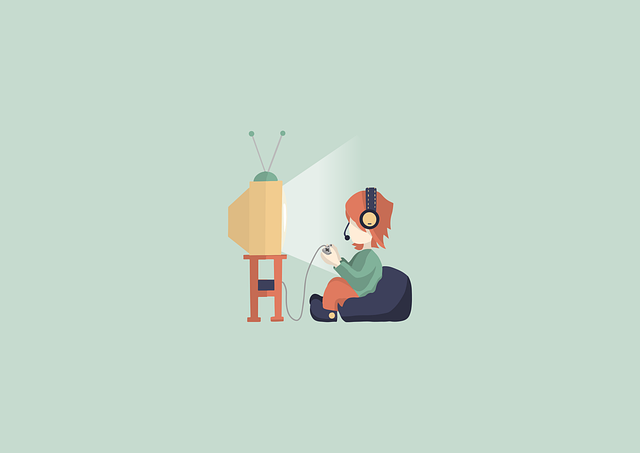Understanding bitrates is crucial for optimal Play DivX on Smart TV experiences. While lower bitrates shrink file sizes, enhancing streaming and storage, they may impact image quality. DivX excels at efficient compression, ensuring high-definition content remains crisp even at reduced resolutions. This balances image quality and file size, ideal for smart TV users seeking seamless playback without buffering over limited bandwidth connections. Many modern Smart TVs come with pre-installed DivX decoders, simplifying the process. By balancing codecs (like DivX or H.264), compression levels, and bitrates (e.g., 2-4 Mbps for HD), users can enjoy rich media experiences on their Smart TVs without sacrificing detail or speed.
Experience crystal-clear images even at the lowest bitrates with DivX—the game-changer for smart TV streaming. This article delves into the secrets behind delivering exceptional image quality while optimizing your bandwidth. We explore the benefits of DivX, guide you through setting adjustments for optimal results, and offer solutions to common challenges, ensuring a seamless playback experience when playing DivX on your smart TV.
Understanding Bitrates and Image Quality

Bitrate refers to the amount of data used to represent a certain segment of an image or video. Lower bitrates mean smaller file sizes, which is beneficial for streaming and storage, especially on devices like Smart TVs. However, this also impacts image quality; as bitrate decreases, so can the sharpness, detail, and overall visual clarity.
When you Play DivX on a Smart TV, understanding bitrates becomes crucial. DivX is a video compression format known for its efficient encoding at low bitrates without significantly compromising picture quality. This makes it ideal for streaming high-definition content over limited bandwidth connections. By optimizing bitrate allocation, DivX ensures that the most important visual elements maintain their integrity even at lower resolutions, providing a satisfying viewing experience on various devices, including Smart TVs.
Advantages of DivX for Smart TV Streaming

DivX offers several significant advantages for smart TV streaming, making it an excellent choice for users seeking high-quality video experiences. One of its key strengths is the ability to deliver exceptional image quality even at low bitrates. This is particularly beneficial for smart TV owners who want to stream content without compromising on visual clarity and detail. By efficiently compressing videos, DivX ensures that you can enjoy movies and shows with crisp visuals, vibrant colors, and sharp textures, all while maintaining a manageable file size.
Playing DivX on smart TVs is seamless thanks to its widespread support and compatibility. Many modern smart TV models come pre-installed with DivX decoders, allowing users to play .divx or .avi files directly without the need for additional software or plugins. This out-of-the-box compatibility simplifies the streaming process, ensuring a smooth and enjoyable experience for viewers who want to focus on content rather than technical hurdles.
Optimizing Settings for Best Results

When optimizing video settings for playing DivX on a Smart TV, understanding the balance between image quality and file size is key. Lower bitrates can significantly enhance video performance over limited bandwidth connections or when storage space is at a premium. Adjusting codecs, resolution, and compression levels in your media player or encoding software allows you to achieve exceptional visual clarity while keeping file sizes manageable.
For best results with DivX on Smart TVs, consider setting the bitrate to around 2-4 Mbps for HD content. This strikes a fine balance between image quality and size, ensuring smooth playback without sacrificing too much detail. Additionally, choosing the right codec like DivX or H.264 can further improve video fidelity by efficiently compressing data without notable loss in picture quality.
Common Challenges and Solutions for Seamless Playback

The pursuit of high-quality video streaming at efficient bitrates presents several challenges, especially when aiming for seamless playback on modern devices like Smart TVs. One common issue is ensuring smooth and uninterrupted video playback without buffering or stuttering, particularly with complex video content that demands significant processing power.
To overcome this, advanced codecs like DivX offer sophisticated solutions. These codecs are designed to compress videos while preserving exceptional image quality, allowing for smaller file sizes and faster streaming. By optimizing compression algorithms, DivX enables efficient data transfer over network connections, ensuring a seamless viewing experience even on devices with varying processing capabilities, such as Smart TVs. This is particularly beneficial for online video platforms and content distributors aiming to provide high-quality content to a wide audience, including those using smart home devices for entertainment.
DivX’s ability to deliver exceptional image quality at low bitrates makes it an excellent choice for streaming on smart TVs. By understanding bitrate and image quality dynamics, optimizing settings, and addressing common challenges, you can enjoy a seamless playback experience. With the right adjustments, playing DivX on your smart TV has never been easier or more visually stunning.
